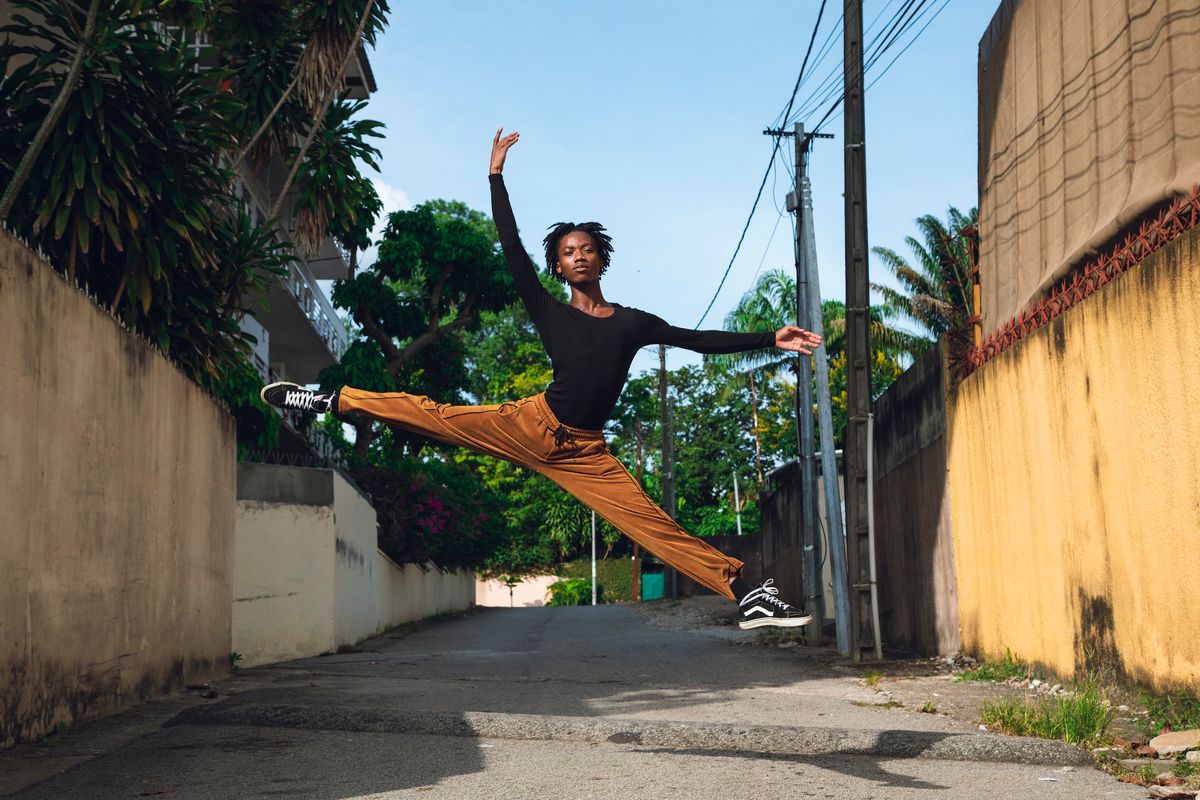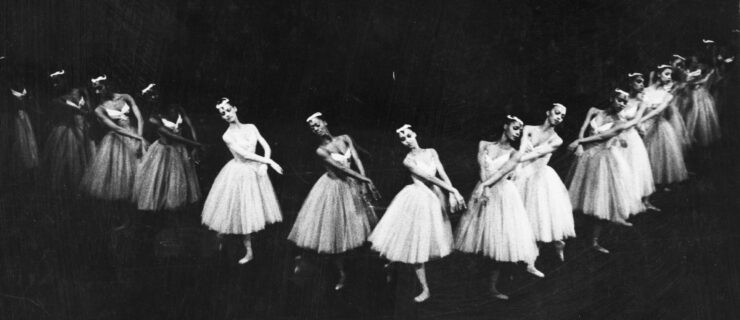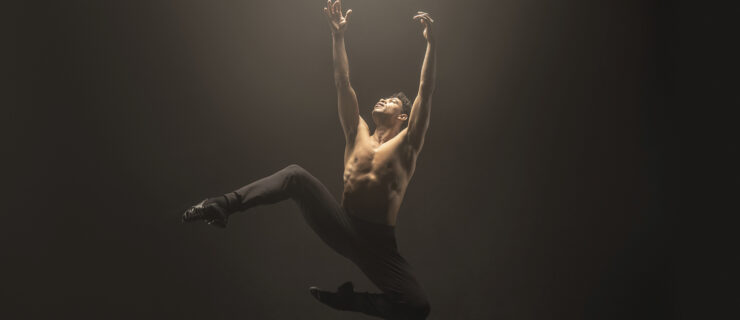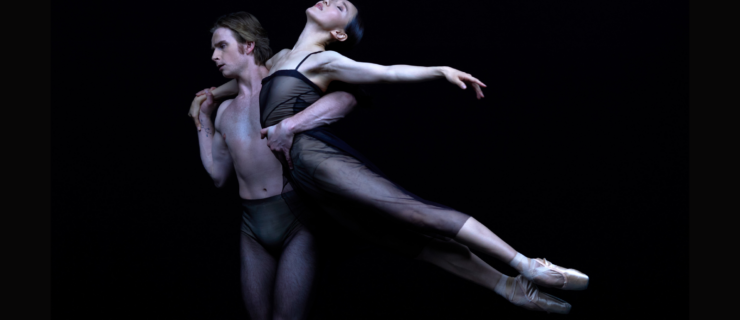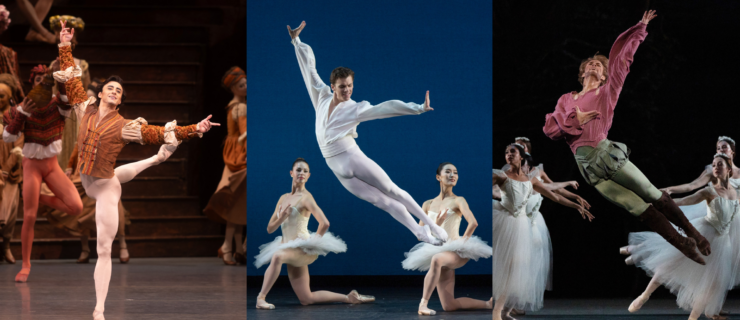"Ballet Rising," a New Docu-Series in the Works, Spotlights Ballet Beyond the Western World
From his home in Abidjan, Ivory Coast, an eight-year-old boy named Yos Clark discovered ballet from the film Un, Dos, Tres, and began teaching himself to dance through videos. A teacher in France saw photos of Yos dancing online, and taught him over Skype because the studio in Abidjan was too long of a commute for him to train there on a regular basis. Apparently, the lessons paid off; last year, Yos received a scholarship to continue his training in Warrington, England.
Dancers like Clark are what propel former Dutch National Ballet principal Casey Herd recently; since leaving the company three years ago, Herd has become determined to shed light on the lesser-known stories of dancers making it around the world. Now, he and his friend and colleague Chris Weisler are creating a documentary project called Ballet Rising. Together they have been transversing the globe, searching for people embracing ballet. (Since the series is still in development, a premiere date is TBA.) Between stops, Pointe touched base with Herd over the phone to learn about the project, where his travels have taken him so far, and what his hopes are for the future of global ballet.
What is Ballet Rising?
Ballet Rising is a documentary series exploring how the global community is changing ballet. It’s an ever-evolving idea that we’re just starting to nail down. When I was a student, most of the dancers I looked up to were from Europe and North America. Since then, there’s been a shift, with an emergence of fantastic dancers from Brazil, Mexico, Korea, China and beyond. By celebrating the individual stories of dancers around the world re-defining the face of ballet, we hope to show how these cultures are elevating ballet into a global art form.
How did the idea for Ballet Rising come about?
After I left Dutch National three years ago, I had to decide what I wanted to do next. I traveled a lot during my dancing career, but always to places that I considered conventional for ballet: London, Paris and New York. I wanted to continue traveling as much and as far as possible, but to places like Tibet, Bolivia and Ethiopia. At the same time, I didn’t want to abandon my past as a dancer, or to lose the connections I’d built with other dancers and choreographers. It took a long time to figure out how to blend those passions.
I think if I hadn’t become a dancer, I would have wanted to be a photographer for National Geographic. Chris Weisler has been my friend since we danced in Amsterdam together, and now works as a professional photographer. He’s been on board from the start, and works behind the scenes as our creative director. Ballet Rising lets us look at the world through a new lens, which is amazing!

Casey Herd and Chris Weisler in New Delhi. Courtesy Ballet Rising.
So, it’s not strictly an outreach project?
We’re most interested in showing stories from a reporter’s perspective. Right now, that means making short films that shed light on individual people’s stories. We want to amplify the voices that already exist but that haven’t necessarily had a chance to reach a global audience.
When I visit a place, I’m happy to pass on whatever I can by teaching classes, talking to local people, and helping create new relationships between the schools and the contacts I’ve worked with as a dancer. But the focus is on celebrating the accomplishments of others, not on our contribution to their lives.
Where has the project taken you so far?
So far we’ve been to New Delhi and Kathmandu. We’re planning to visit the Ivory Coast, Ethiopia, Mexico and Brazil this summer, and are hoping to go to the Philippines in November. Many other dance schools have reached out, and we’re in contact with people in Cambodia, Sri Lanka, Thailand, Colombia, Nigeria and Kenya.

Ritika Chandra. Courtesy Ballet Rising.
Whose stories do you plan to cover?
Yos Clark’s story is amazing, and we really hope to meet him this summer in Abidjan. We also loved meeting Ritika Chandra and visiting her studio Élan Ballet in New Delhi—a great example of an unknown school that is really doing something. We’d love to meet one teacher in Cambodia who struggles to pay for pointe shoes shipped from the United States even though they’re made right there in Cambodia—just one example of challenges faced by dancers in areas where ballet is less established.
What are the biggest hurdles to launching the project?
Ballet Rising is still in its beginnings, and we’re still exploring ways to finance it. We’re raising money through Fund Ballet in order to finish the pilot phase. I financed our first round of trips with savings. And we’re looking into other ways to find sponsors through avenues like dancewear companies, airlines, and hotel chains.
Another struggle has been navigating criticism. We’ve been accused of posing as “messiahs of ballet” with an agenda to convert the world, and suspected of promoting cultural colonization at the detriment of indigenous culture. That’s the last thing we want to do! But these concerns were really eye-opening, and caused me to re-consider some of the language we’d been using to promote the project. To be clear, Ballet Rising is not about proving how ballet can change the world. It’s about celebrating the places already proving how the world is changing ballet.

Herd and Weisler filming an episode of Ballet Rising.
What do you have planned this summer?
In Guadalajara, Mexico, we’ll visit a school known for producing an astonishing level of talent. And Dutch National principal Daniel Camargo will show us around Ourinhos, Brazil, where we can see where he started out and learn about the challenges he faced as a ballet student there. We’re also in touch with Projection Dance, a foundation run by Tim Podesta, about a collaboration in Ethiopia. Hopefully after this summer, we’ll have featured stories in Asia, Africa and Latin America.
What are your ultimate hopes for Ballet Rising?
Anthony Bourdain’s docu-series Parts Unknown is a huge source of inspiration for us; just as he sees the world through the lens of life as a chef, we hope to create a new lens that sees the world from a dancer’s perspective. A few networks have shown interest in Ballet Rising so far, and I can’t wait to see what happens.
Ballet Rising is ever-evolving. We plan to return to the places we visit to see the progress over time. We’d also like to find out if a dance flooring company or ballet company might donate flooring to schools like Ritika’s, or if we can help teachers like the one in Cambodia access pointe shoes more easily.
We’re so grateful to have the support of colleagues and directors like Sascha Radetsky, Peter Boal, and Ted Brandsen, who believe in what we’re doing. The ballet world keeps expanding, and I can’t wait to see where it ends up.
